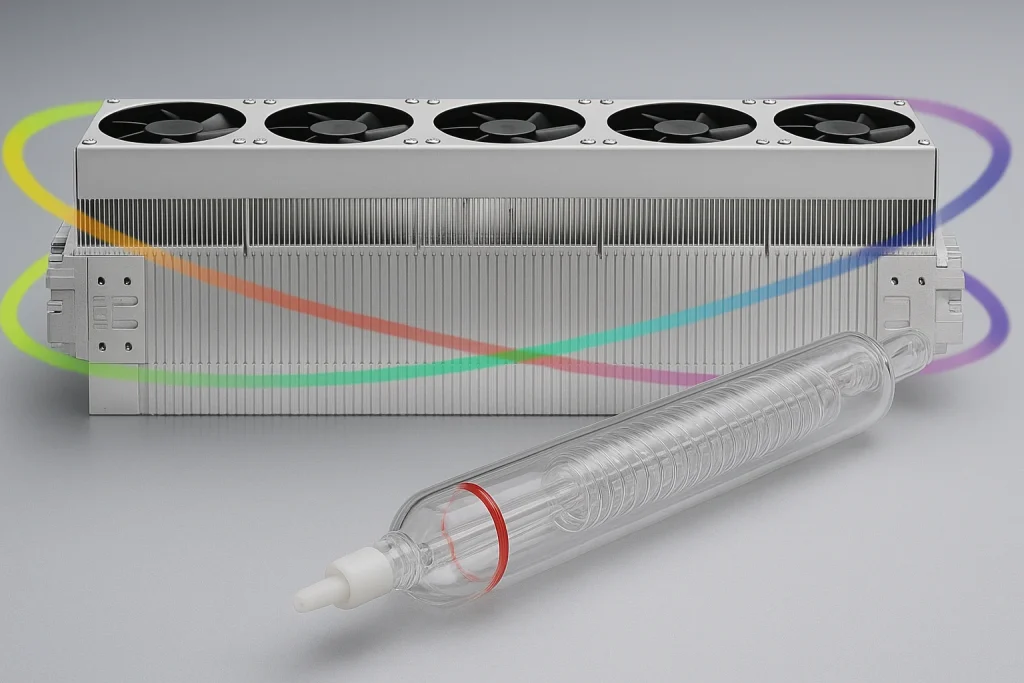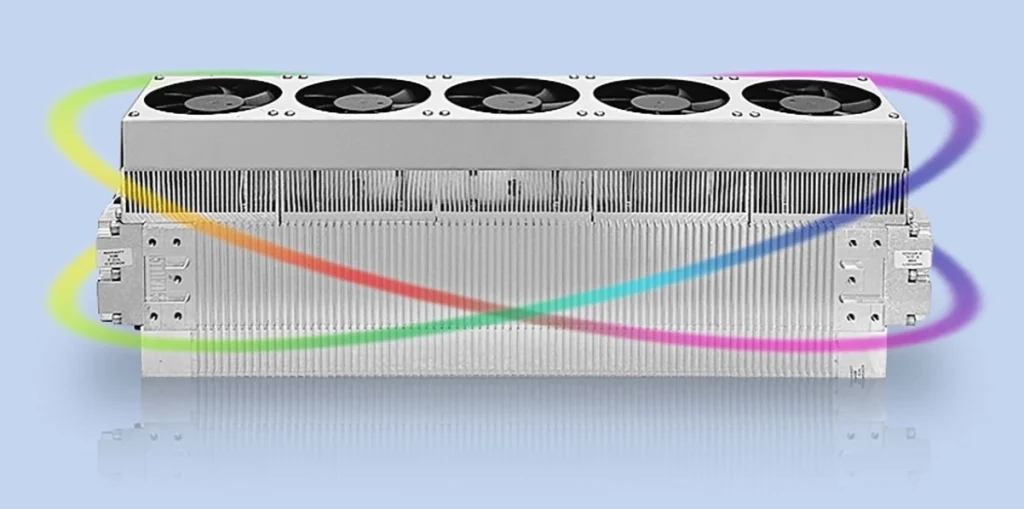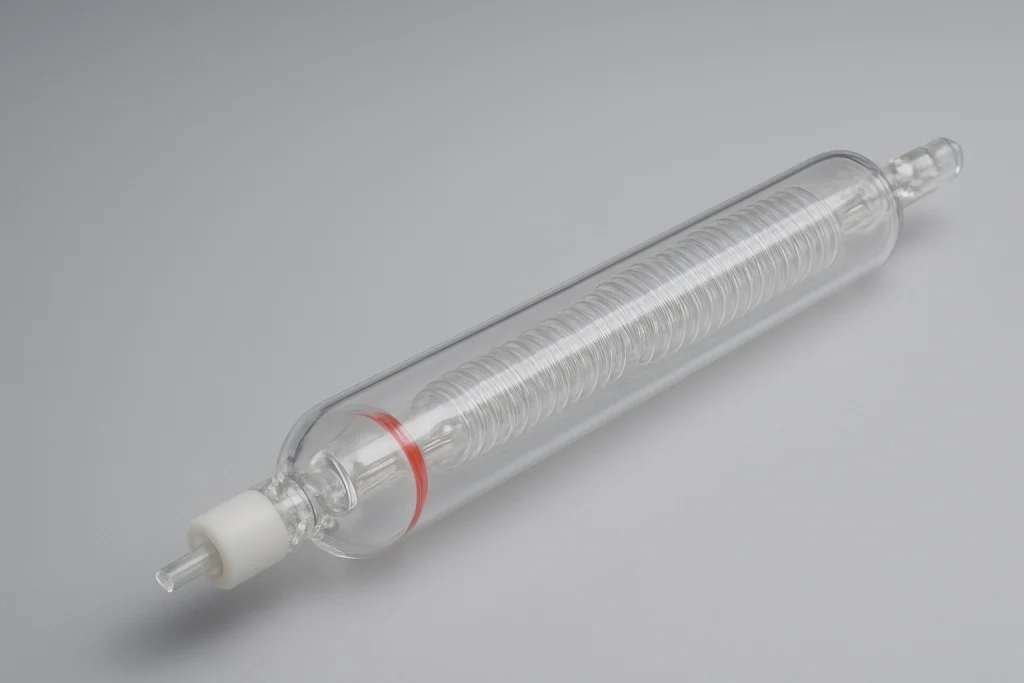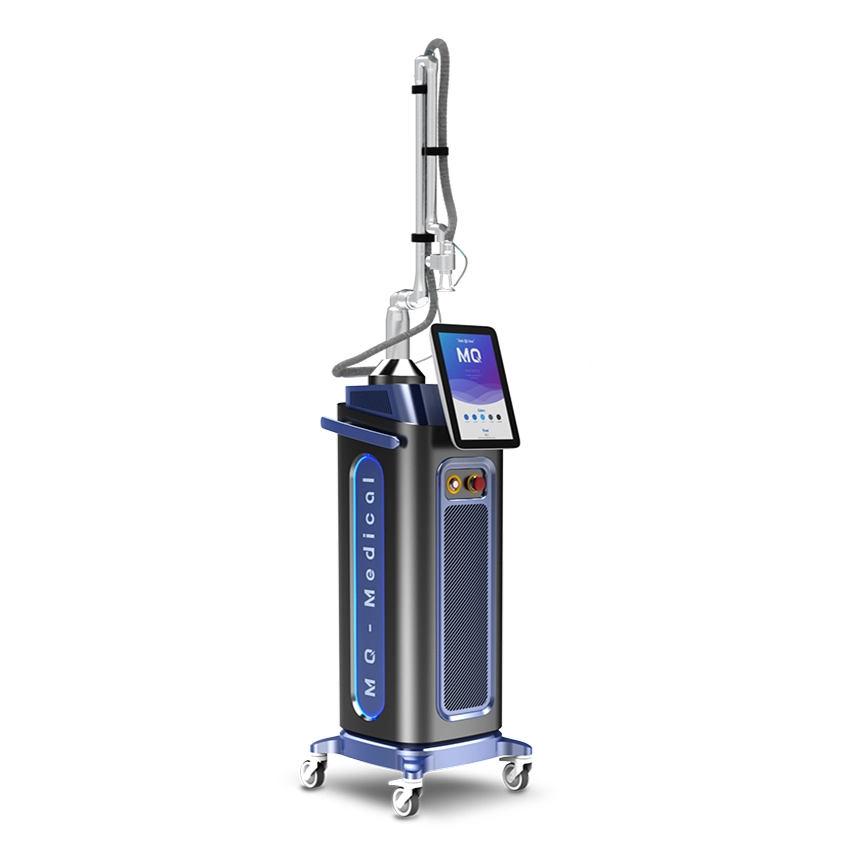
Fractional CO2 lasers have totally changed the game for skin treatments and beauty procedures. They’re awesome for smoothing out skin, fading pesky scars, and even helping with vaginal health. How do they work? These machines shoot tiny laser beams into your skin, kicking collagen production into high gear and helping your body heal itself. The heart of any CO2 laser system is the laser tube. Choosing between a Radio Frequency (RF) tube and a glass (DC-excited) tube makes a huge difference in how well the device performs, how long it lasts, how much TLC it needs, and whether it’s worth your cash. Let’s break it down so you can see which one fits a clinic’s needs best.
Basic Concepts of RF and Glass CO2 Laser Tubes
Both RF and glass tubes have one main job: creating a CO2 laser beam. But the way they fire up the gas inside is what sets them apart. This affects everything about how they work in real life.
What is an RF (Radio Frequency) CO2 Laser Tube?

An RF tube is a tough, metal-sealed laser tube powered by radio frequency energy. These bad boys, made by top-notch companies, are super precise, steady as a rock, and last forever—well, almost! They barely need any upkeep, which makes them a go-to for modern clinics looking to step up their game.
What is a Glass (DC-Excited) CO2 Laser Tube?

Glass tubes, on the other hand, use a strong electric current to spark the gas inside a sealed glass container. They’re easier on the wallet upfront, but they don’t stick around as long. Plus, they need more frequent fixes. Still, they’re a solid pick for clinics just dipping their toes into laser treatments.
Structural and Material Differences
The way these tubes are built is a big deal. The materials and design affect how sturdy they are and how good the laser beam turns out.
Composition and Construction of RF Tubes
RF tubes are crafted from tough metal in a super-tight, sealed setup. This makes them crazy durable. They cool down with air, which is nice and simple, and keep the beam steady over time. So, you get a high-quality laser that lasts for years. Pretty cool, right?
Design and Build of Glass Tubes
Glass tubes are made of fragile glass containers filled with gas. They rely on water cooling to keep things running smoothly. But here’s the catch: their design makes them more sensitive to stuff like humidity or dust, which can mess them up over time.
Beam Quality and Stability
When it comes to laser treatments, the beam’s quality and reliability are everything. They decide how precise your work is and whether patients get consistent results.
Focus Precision and Spot Size Comparison
RF tubes shine here. They produce a top-quality beam with a tiny, super-accurate focal point. This means you can zero in on exactly what you’re treating. The energy spreads out evenly, so patients feel less discomfort, and the results? They’re often amazing. Glass tubes, though, tend to create bigger, less even beams. That can make it trickier to tackle fine details, like those stubborn wrinkles around the eyes or certain scars.
Consistency in Energy Output Over Time
RF tubes keep their power steady, even after hours of use. Their solid build and strong parts make this possible. Glass tubes? Not so much. Their electrodes wear out, or the gas inside gets funky, which can make the power level jump around. Nobody wants that during a treatment!
Lifespan and Durability
How long a laser tube lasts is a big deal for clinics. It affects how much bang you get for your buck and how often you’re stuck with downtime.
Typical Lifespan of RF Tubes
RF tubes can keep going for 7 to 10 years. That’s a long time! However, the RF tubes in MQLASER’s Fractional CO2 Laser Devices have a lifespan of over 30 years. They’re perfect for busy clinics that need a machine they can count on day in and day out. Fewer replacements mean less hassle.

Lifespan Expectations for Glass Tubes
Glass tubes usually last 1 to 3 years. How long they hold up depends on how much you use them, how good your cooling system is, and how well you take care of them. They wear out faster than RF tubes, no question.
Resistance to Environmental Factors
RF tubes are sealed up tight in metal, so they laugh off things like dust or humidity. This makes them reliable in all kinds of settings. Glass tubes aren’t as tough. Changes in temperature or moisture can mess with them, which might cut their life short.
Power Control and Operational Efficiency
Being able to tweak the laser’s power and pulses just right is crucial. It lets you tailor treatments to each patient and hit specific skin issues spot-on.
Modulation Speed and Control Accuracy in RF Tubes
RF systems are quick on their feet. They adjust pulses fast and with pinpoint accuracy. This lets you use fancy modes like “ultra-pulse,” which blasts strong power in super-short bursts. That’s perfect for delicate jobs. Plus, this kind of control makes treatments more effective for sensitive procedures. How great is that?
Power Response Characteristics of Glass Tubes
Glass tubes are a bit sluggish. Their electric current setup makes them slower to react, so they’re not ideal for treatments that need quick pulse changes or ultra-short bursts. For some high-end procedures, that’s a bummer.
Maintenance Requirements
Keeping a laser system running smoothly can make or break your budget and schedule. The upkeep needs for RF and glass tubes are night and day.
Minimal Maintenance Design of RF Tubes
RF tubes are low-maintenance champs. Their air-cooled, sealed design means you don’t have to mess with refilling gas or cleaning electrodes. For busy clinics, that’s a huge win.
Routine Upkeep Needed for Glass Tubes
Glass tube lasers are needier. Their water-cooling systems need regular cleaning to avoid gunk buildup. On top of that, you’ve got to keep an eye on the system to make sure it’s performing well. All this extra work can pile up in terms of time and money.
Cost Considerations and Long-Term Value
Sure, performance is key, but let’s talk money. The cost of buying and maintaining a laser system is a big piece of the puzzle for any clinic.
Initial Investment vs. Long-Term Cost Efficiency
RF tube systems will hit your wallet harder upfront. But here’s the thing: they last 7-10 years, some like the RF tubes in MQLASER’s Fractional CO2 Laser Devices even have a lifespan of over 30 years, need less downtime, and barely ask for maintenance. Over time, that saves you money. Glass tube systems are cheaper to start with, but they need replacing sooner, and their upkeep costs add up. So, RF often wins for long-term savings.
Application Suitability Based on Budget and Usage Needs
Got a tight budget? Glass tube systems are a great way to start offering CO2 laser treatments without breaking the bank. But if your clinic is all about top-notch reliability and saving money in the long run, RF tubes are worth the extra cash upfront. It’s all about weighing what you can spend now against what you want down the road.
FAQs
Q1: Which type of CO2 laser tube offers better results for facial wrinkle removal?
A: RF tubes usually take the crown for smoothing wrinkles. Their high-quality beam targets skin super precisely and boosts collagen growth like nobody’s business. Patients might see awesome results faster than with glass tubes.
Q2: Are there significant maintenance differences between RF and glass tube lasers?
A: RF tubes are a breeze to maintain with their sealed, air-cooled setup. Glass tubes? They’re high-maintenance. You’ve got to clean their water-cooling systems regularly and check performance to keep things running smoothly.
Q3: Is it possible to upgrade from a glass tube system to an RF tube system?
A: Lots of clinics start with a budget-friendly glass tube system. As they grow, they might want the power of an RF system. But don’t think you can just swap parts. The tubes, power supply, and cooling systems are totally different. So, “upgrading” means buying a whole new machine.
















